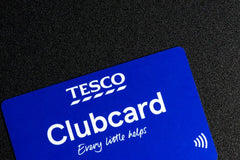
Thinkific vs. Graphy: The Ultimate Comparison for Ecommerce Course Creators
Table of Contents
- Key Highlights:
- Introduction
- Thinkific vs. Graphy: A Comparative Overview
- Best for Pricing: Thinkific Wins on Long-Term Value
- Best for Ecommerce Integration: Thinkific
- Best for Branding and Design Control: Thinkific
- Marketing Features: Thinkific vs. Graphy
Key Highlights:
- Thinkific emerges as the superior platform for ecommerce businesses looking to sell digital products without incurring additional transaction fees.
- Graphy is tailored more for solo creators and influencers starting from scratch, with features that cater to their needs but may not be as robust for established ecommerce brands.
- Integrations, pricing structures, and branding capabilities heavily favor Thinkific, making it the go-to choice for seamless ecommerce integration and long-term value.
Introduction
In the rapidly expanding realm of online education, choosing the right platform to sell courses can significantly impact your success. For ecommerce business owners, the decision becomes even more crucial as it intertwines with existing sales strategies and customer experiences. Two notable contenders in this space are Thinkific and Graphy, each offering distinct advantages and target audiences. This article delves into an exhaustive comparison between these platforms, focusing on their pricing, integrations, customization options, and marketing capabilities, ultimately providing clarity on which platform best serves established ecommerce brands.
Thinkific vs. Graphy: A Comparative Overview
When it comes to online course platforms, both Thinkific and Graphy present unique features that cater to different types of creators. However, for ecommerce businesses aiming to seamlessly incorporate digital products into their offerings, one platform clearly stands out.
Key Features Comparison
| Feature | Thinkific | Graphy |
|---|---|---|
| Pricing | Free plan available; paid from $49/month | Starts at $29/month; transaction fees on lower tiers |
| Ecommerce Integrations | Shopify, Zapier, Stripe, PayPal | Built-in checkout; fewer external integrations |
| Branding & Customization | Full white-labeling with custom domain | White-labeling only on higher plans |
| Mobile App | Enterprise-only | Included in most plans |
| Marketing Tools | Email integrations, affiliate system | Built-in webinars, email, lead capture |
| Region Focus | Global (US, UK, CA, AU) | Primarily India, Southeast Asia, expanding globally |
| Best For | Ecommerce brands expanding to digital products | Coaches and content creators launching online |
Best for Pricing: Thinkific Wins on Long-Term Value
Pricing is a pivotal factor when selecting an online course platform, especially for ecommerce businesses that must navigate various costs associated with operations.
Thinkific’s Pricing Structure
Thinkific offers a clear and predictable pricing model, which is a significant advantage. The platform presents a free plan that allows users to create one course with limited features, making it an excellent option for testing the waters. Below is a breakdown of Thinkific's pricing:
| Plan | Price (Monthly) | Key Features |
|---|---|---|
| Free | $0 | 1 course, limited features |
| Basic | $49 | Coupons, integrations, live chat support |
| Start | $99 | Bundles, communities, affiliate programs |
| Grow | $199 | Advanced segmentation, groups, API access |
The standout feature of Thinkific's pricing is the absence of transaction fees across all plans. This becomes especially important for ecommerce businesses that may sell higher-ticket courses or bundles, where fees could significantly impact profitability. The flexibility to start with a free tier and gradually upgrade as revenue grows is particularly beneficial for those transitioning from physical products to digital offerings.
Graphy’s Pricing Structure
Graphy presents a lower entry point, but its pricing can become convoluted due to transaction fees on its lower tiers. Here’s a quick look at Graphy’s plans:
| Plan | Price (Monthly) | Transaction Fees | Key Features |
|---|---|---|---|
| Creator | $29 | 5–10% | Basic tools, Graphy branding |
| Pro | $79 | 3% | Custom domain, lead capture |
| Business | $199 | 0% | Branded mobile app, full white-label |
While Graphy’s initial costs may seem appealing, the cumulative fees can be substantial. For instance, selling 100 courses priced at $300 each at a 5% transaction fee results in $1,500 in fees monthly. The necessity of upgrading to higher-priced plans for essential features such as branding and customization further complicates cost considerations.
The Verdict on Pricing
In terms of long-term value, Thinkific wins. The transparency in pricing, absence of transaction fees, and flexible upgrading options make it the ideal choice for ecommerce entrepreneurs who want to optimize their margins while expanding into digital products.
Best for Ecommerce Integration: Thinkific
Integration capabilities are critical for ecommerce businesses that rely on various tools and platforms for operations.
Thinkific’s Integration Ecosystem
Thinkific excels in this area, offering seamless integrations with numerous ecommerce tools, including:
- Shopify: The official Thinkific app allows for easy integration with existing Shopify stores.
- Payment Processors: Supports Stripe and PayPal, ensuring a smooth transaction experience.
- Automation Tools: Zapier integration connects with over 1,000 applications, facilitating extensive automation capabilities.
- Email Marketing Platforms: Integrates with ActiveCampaign, ConvertKit, and Mailchimp for enhanced marketing efforts.
- Analytics: Compatibility with Google Analytics and Meta Pixel for tracking performance metrics.
These integrations allow ecommerce store owners to bundle digital and physical products effortlessly, maintaining a unified shopping experience for customers. The ability to automate various processes without coding is another significant benefit, enhancing operational efficiency.
Graphy’s Integration Setup
In contrast, Graphy operates with a more limited integration framework:
- Payment Gateways: Internal payment options include Stripe, Razorpay, or PayPal.
- Lack of External Integrations: No support for Shopify or WooCommerce means businesses must rely on Graphy’s built-in tools, which may not suffice for more complex needs.
- Limited CRM Customization: While a CRM is included, it lacks customization options with third-party tools.
While Graphy offers a straightforward setup for quick launches, its closed ecosystem can hinder businesses looking to grow and automate further. The absence of crucial integrations means that scaling operations might require custom development, which can be costly and time-consuming.
The Integration Winner
For ecommerce brands already utilizing various tools, Thinkific is clearly the better option, providing a robust platform that integrates seamlessly with existing systems.
Best for Branding and Design Control: Thinkific
Brand identity is essential for ecommerce businesses, and the ability to maintain that identity across all platforms can significantly affect customer trust and engagement.
Thinkific’s Branding Capabilities
Thinkific allows for extensive branding options, including:
- Full White-Labeling: Users can customize their course sites with a unique domain and remove all Thinkific branding, creating a professional experience that reflects their brand.
- Customizable Design: The platform enables users to adjust colors, logos, and layouts to ensure consistency with their overall brand aesthetics.
This level of control is crucial for ecommerce businesses that want to create a cohesive brand experience, helping to foster trust and loyalty among customers.
Graphy’s Branding Limitations
Graphy offers limited branding options, particularly at lower pricing tiers:
- White-Labeling: Available only on higher-priced plans, which may not be feasible for newcomers or small businesses.
- Basic Design Customization: While some customization is possible, it does not match the flexibility provided by Thinkific.
The Branding Winner
For businesses that prioritize brand identity and customer trust, Thinkific offers the most comprehensive options, making it the go-to platform for ecommerce entrepreneurs looking to sell courses.
Marketing Features: Thinkific vs. Graphy
Effective marketing tools are essential for promoting digital products, and both platforms have features designed to help course creators attract and retain customers.
Thinkific’s Marketing Tools
Thinkific provides a suite of marketing capabilities, including:
- Email Marketing Integrations: Connects with various email marketing platforms, allowing for targeted campaigns and customer engagement.
- Affiliate Marketing: Users can set up affiliate programs to encourage others to promote their courses, increasing reach and sales.
- Landing Pages and Funnels: The ability to create dedicated landing pages for courses helps in driving conversions.
By offering robust marketing functionalities, Thinkific enables ecommerce businesses to efficiently promote their digital products and engage with their audience.
Graphy’s Marketing Features
Graphy includes built-in marketing features aimed primarily at solo creators:
- Webinars: Allows users to conduct live sessions to engage potential customers directly.
- Lead Capture: Basic tools for gathering leads are included, but they may not be as comprehensive as those offered by Thinkific.
While Graphy’s tools can be useful for individual creators, they may not provide the depth needed for ecommerce businesses looking to implement more sophisticated marketing strategies.
The Marketing Tools Winner
When it comes to marketing capabilities, Thinkific provides a more extensive toolkit for ecommerce brands, enabling them to effectively promote their courses and engage with their customer base.
FAQ
Which platform is better for established ecommerce businesses?
Thinkific is the better choice for established ecommerce businesses due to its robust integrations, absence of transaction fees, and extensive branding capabilities.
Can I start with a free plan on Thinkific?
Yes, Thinkific offers a free plan that allows you to create one course with limited features, making it a great option for testing.
Are there transaction fees with Graphy?
Yes, Graphy imposes transaction fees on its lower pricing tiers, which can add up significantly as sales increase.
How does Thinkific handle course marketing?
Thinkific offers various marketing integrations, including email marketing and affiliate programs, allowing ecommerce businesses to effectively promote their courses.
Is it possible to customize my course branding on Graphy?
Customization options are limited on Graphy, with full white-labeling only available on higher-priced plans.
Can I integrate Thinkific with my existing ecommerce tools?
Absolutely, Thinkific supports various integrations with ecommerce platforms like Shopify, payment processors, and automation tools, making it easy to align with your existing systems.
In conclusion, for ecommerce entrepreneurs looking to launch or expand their digital product offerings, Thinkific clearly outshines Graphy in terms of pricing, integration, branding, and marketing features. By choosing the right platform, businesses can not only sell courses effectively but also create a seamless experience for their customers, ultimately driving growth and profitability.
Potencia tu comercio electrónico con nuestros informes y actualizaciones semanales!
Mantente alineado con lo que está sucediendo en el mundo del comercio
Dirección de correo electrónico
Seleccionado para Ti
29 July 2025 / Blog
Harnessing AI Search: How Shopify Stores Can Drive Traffic with ChatGPT
Leer más
29 July 2025 / Blog
Tesco and LiveRamp: Revolutionizing Personalized Shopping Experiences with Data Collaboration
Leer más
29 July 2025 / Blog


